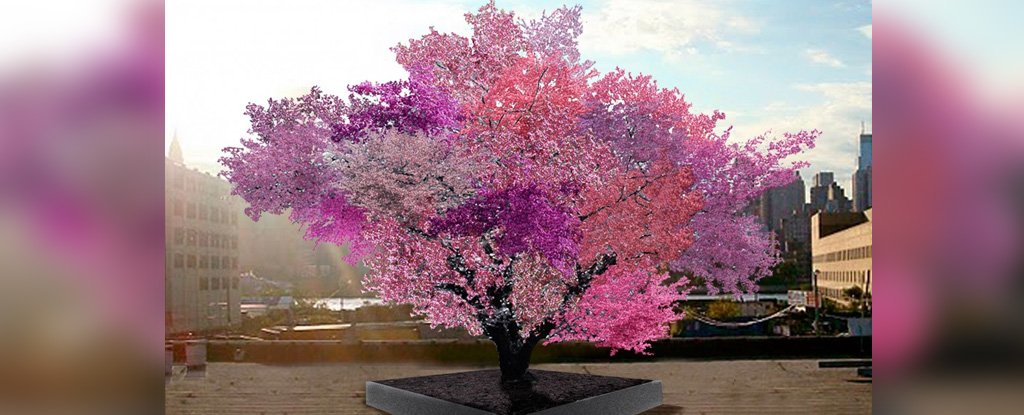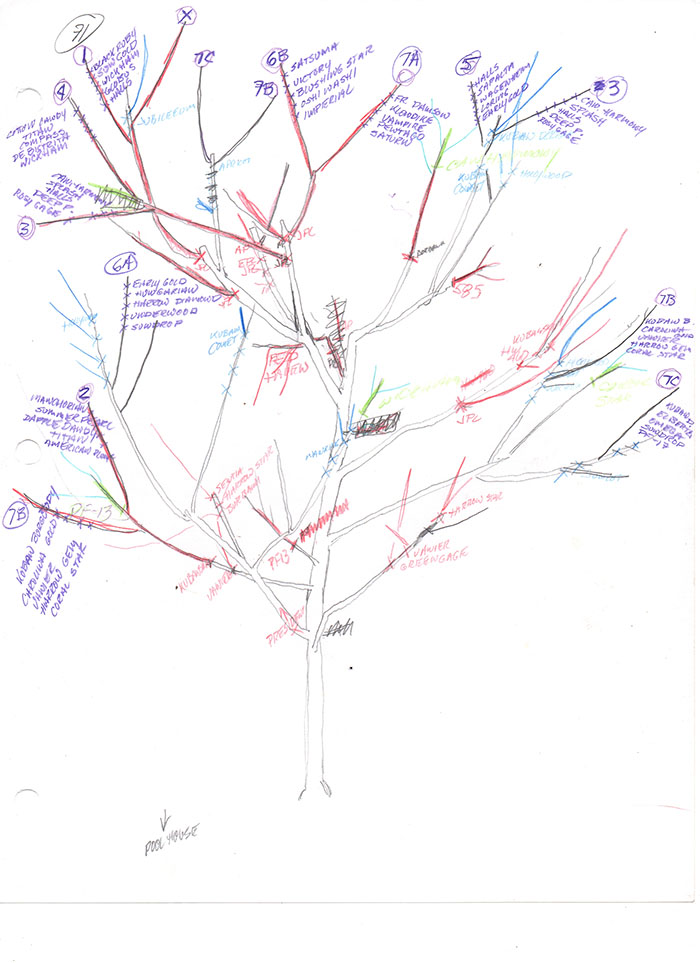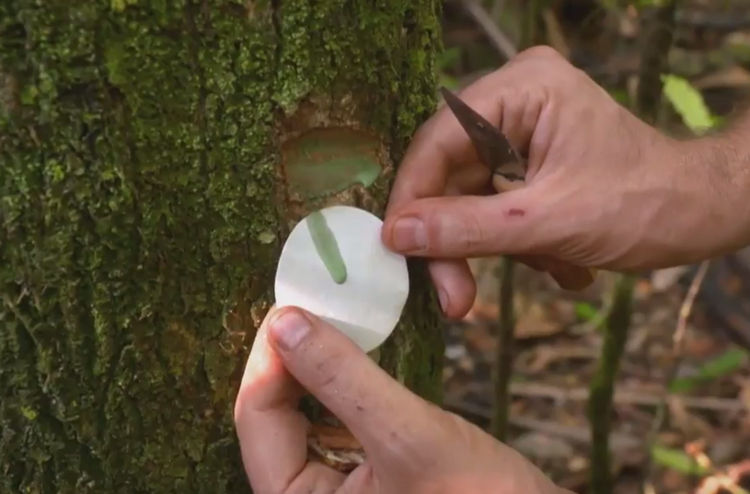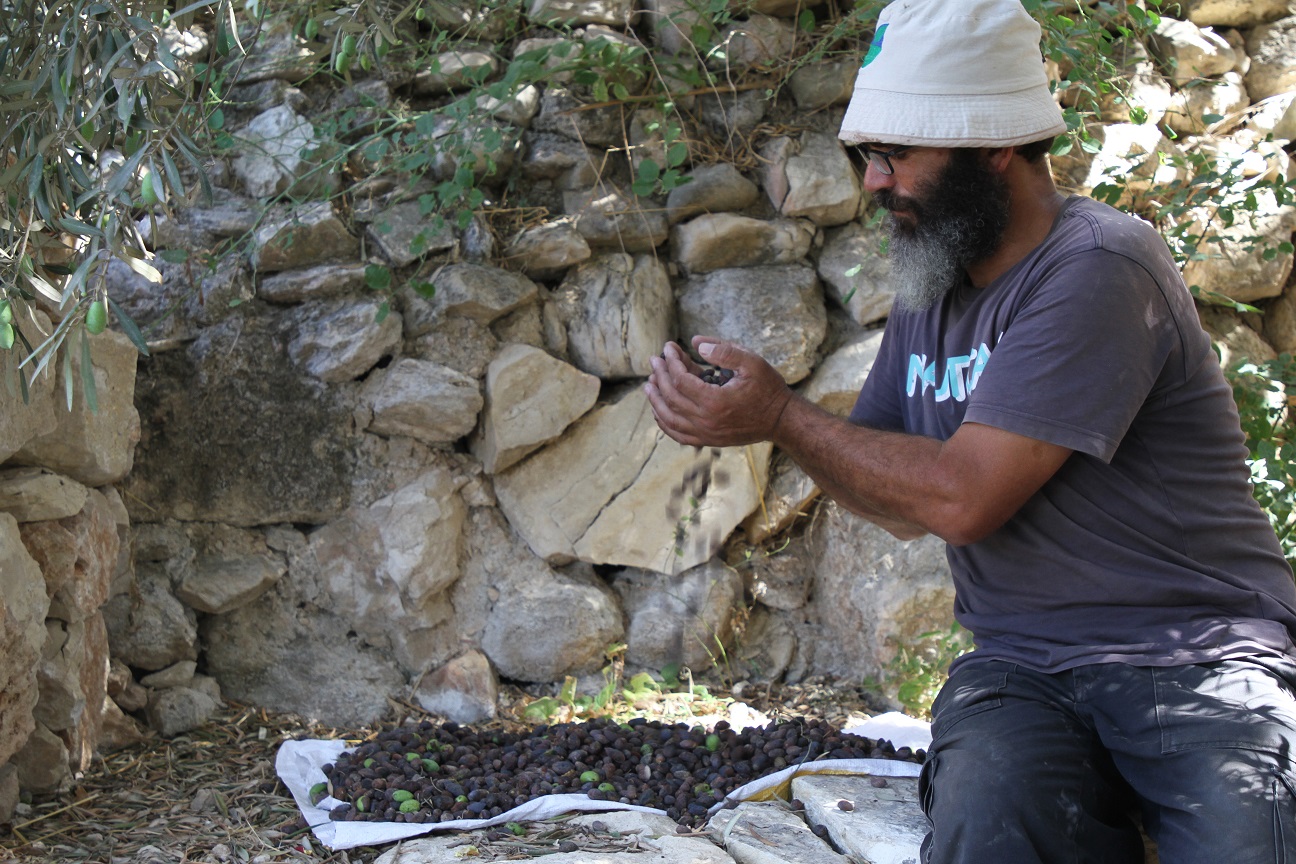first impact. Greenland icecores were some of this evidence. I wonder what species of insects,trees etc... they will discover from this uncovered forest lived then ?
Alabama's 60,000-year-old underwater forest spills its secrets in new documentary
http://www.al.com/news/mobile/index.ssf ... abama.html
[video][/video]
The ancient cypress forest found 60 feet underwater in the Gulf of Mexico, due south of Gulf Shores, Ala., is about 60,000 years old, says a team of scientists who have studied the site.
The forest appears to be a wholly unique relic of our planet’s past, the only known site where a coastal ice age forest this old has been preserved in place, with thousands of trees still rooted in the dirt they were growing millennia ago. It is considered a treasure trove of information, providing new insights into everything from climate in the region to annual rainfall, insect populations, and the types of plants that inhabited the Gulf Coast before humans arrived in the new world. Scientific analysis of the site is ongoing. One of the key things the forest might hint at is a world where the seas rose even more quickly than the worst-case predictions for the near future.
The work of the team investigating the site is detailed in the new documentary, The Underwater Forest, co-produced by This is Alabama and the Alabama Coastal Foundation. You can watch the film above, on Youtube, or on This is Alabama's Roku and Apple TV apps. It will be broadcast on Alabama Public Television at 6 p.m. July 23rd and 9 p.m. July 24th. The film was written and directed by this writer, AL.com’s Ben Raines, who also filmed the underwater sequences and organized the first scientific missions to the site. It was narrated by Ian Thompson-Yates.
http://www.al.com/news/mobile/index.ssf ... abama.html

The scientists believe the forest was buried beneath the Gulf sediments for eons, until giant waves driven by Hurricane Ivan in 2004 uncovered it. Before it made landfall, Ivan raged through the Gulf as a Category 5 hurricane. Its winds pushed the largest waves ever measured, which were 98 feet tall when they passed over a cluster of government data buoys far offshore. Those buoys, seen in the image above, were ultimately ripped loose from their moorings by the storm. The green dots indicate the path of the storm, which passed directly over the spot where the forest was discovered.
AL.com collected the first samples from the site, and has participated in every scientific mission to the site, beginning in 2012. Our crews subsequently visited the laboratories at Louisiana State University and the University of Southern Mississippi where samples from the forest have been analyzed.
Dropping 10 fathoms down, below the green waves of the Gulf and back in time to this prehistoric world amounts to a sort of time traveler’s journey. Swimming through the forest, it is possible to trace the path of an ancient river, seen above, that once wove through the site when it was dry land. Nothing like the forest, in terms of age or scale, has ever been found. A few trees, perhaps 1,000 years old, have been found off the English coast, and a handful of other places, but they grew in a world we understand well, one much like our own in every way.
These trees sprouting from the sea floor off Alabama are so much older that they provide a window into a past scientists are still trying to understand. And there are thousands of them, part of a vast and swampy floodplain forest. The scientists believe the trees were buried under layers of mud in an age when sea levels were suddenly on the rise. That mud protected the trees from decomposition because they sealed them away from the oxygen-rich Gulf water. Underwater, where there is no oxygen, there is no decomposition. In effect, the trees have been hermetically sealed in place in a sort of natural time capsule.

Most of the Gulf is a barren desert, empty sand and little else but jellyfish and starfish. But the forest serves as both a relic of the past and a vibrant reef environment. Sea turtles and sharks swim through the huge clouds of fish. Sponges sprout from the old stumps, and anemones cling to the bark of the trees.
Predating the arrival of humans in North America and the pyramids of ancient Egypt by more than 50,000 years, the trees discovered in the Underwater Forest date to an ice age 60,000 years ago, when sea levels were hundreds of feet lower, and the Earth was much cooler than it is today, with much of the water on the planet locked up in glaciers.
While most people think of the period from about 12,000 to 18,000 years ago when they think of “the” ice age, the planet has actually been visited by dozens of ice ages, which occur every 40,000 to 100,000 years.
Kristine DeLong is a paleoclimatologist at Louisiana State University, expert in the climactic upheavals of the past. She usually studies coral formations, which can provide a record of what the world’s oceans and atmosphere were like thousands of years ago. She contacted AL.com after the first article announcing the discovery of the forest and said she’d like a crack at diving the site and analyzing the trees. At the time, DeLong, like every expert contacted by AL.com, said the trees were almost certainly from the most recent ice age, which has been thoroughly researched by scientists.
But things changed after AL.com provided DeLong with tree samples from the forest that she sent for analysis at Lawrence Livermore National Laboratory using a method known as Accelerator Mass Spectrometer Radio-Carbon Dating.
“At first, just based on water depth and looking at the sea level curve, we thought the trees should be in the 10,000 to 12,000 (year old) range. But we took some wood samples, sent them off to get radio-carbon dated, and surprising results. They were not able to date them because the trees were so old we can’t use radio-carbon dating to date them,” DeLong said.
Radio-carbon dating can only reach back about 50,000 years, and the closer you get to 50,000 years, the less reliable the data becomes. Several follow up tests on additional samples confirmed that the trees were what’s known as “radio-carbon dead.” DeLong then turned to a team of LSU geologists who collected core samples from the sea floor, known as vibracores.
The vibracore machine, seen here as it is deployed from a research boat, punches a metal tube about four inches in diameter into the seafloor. It can penetrate down through nine feet of sediment, trap this column of dirt, and bring it back to the surface for analysis. The sediment trapped in the tube provides a clear chronology of the past, with layers of sand and mud being added over the millennia. Using extremely sensitive sonar machines, the LSU team was able to find an area with large numbers of trees that were still entirely buried in layers of sediment. In some cases, those trees are more than 10 feet down.
From the vibracores, DeLong’s team was able to find material from about 45,000 years ago that was recent enough to register when radio-carbon dated. Then, by measuring how many inches of sediment separated that layer from the surface, and from the deeper layer where the forest lies, DeLong was able to calculate the age of the forest.
“In those sediment cores, right above the level where the forest is, we had some other pieces of wood. We collected those pieces, and those dates came back about 42,000 years old and we have a second date 45,000,” DeLong said. “This tells us we are in the ballpark of between 50,000 to 60,000 years ago for the actual wood pieces.”
In this earlier ice age, when much of the water on Earth was locked up in glaciers, sea levels along the Gulf Coast were about 400 feet lower than they are today, and the Gulf shoreline was between 30 and 60 miles farther offshore than our modern beaches. Dauphin Island and the Fort Morgan peninsula on the Alabama coast were veritable mountains at the time, towering hundreds of feet above the surrounding landscape. And Mobile Bay was a valley, with a river running through the middle. At various points in the distant past, the rivers that today drain into the Mobile-Tensaw Delta ran south until they hit the Mississippi River, which in this ancient era made a sharp turn to the east in Louisiana and ran along the Mississippi and Alabama coasts toward the Florida Panhandle before entering the Gulf. Mobile Bay was a forested valley at the time, with rivers running through it.
It was in this now inundated zone between the modern shoreline and the more distant ancient shoreline that the Underwater Forest sat. Scientists believe this portion of forest was miles back from the Gulf shoreline at the time, as cypress trees cannot tolerate exposure to salt.
Ancient pollen shows forest in transition
Interestingly, an analysis of the types of pollen found in the LSU vibracores, seen above, provides intriguing hints at how a bald cypress forest handled these changes in sea level and colder weather. In fact, the pollen record suggests the Underwater Forest was more like a coastal forest you would find today in North Carolina, where winters are much colder than on the Gulf Coast.
Andy Reese, a pollinologist at the University of Southern Mississippi, specializes in reconstructing the environments of the past by looking at the pollen left behind by various plant species. He analyzed the deepest of the vibracores collected by LSU.
“The top meter of that core is just Holocene sand, like you sink your feet into at the beach. Then, the next meter is sand and marine clay. Then, all of a sudden, it transitions to peat. That’s the weirdest thing I’ve ever seen in an oceanic core like that, just perfectly preserved peat, that runs a half a meter down,” Reese said. Peat is decaying organic matter, present on the bottom of swamps and bogs.
“When I started to look at the pollen, I was pretty surprised to see that it was all terrestrial. At first, it seemed like you dug up a scoop of dirt from a swamp just on the other side of town today. That’s what was present in terms of species. But when I started to count how many of each type of pollen I found, it became apparent that different species were dominant.”
In fact, the type of forest that Reese reconstructed is not found on the Gulf Coast at all today. Instead, the mix of species, with the dominant trees being cypress, alder and oak, fits with a rare forest type now found on the coasts of North and South Carolina called the Atlantic Coastal Plain Blackwater Levee/Bar Forest. In essence, the Underwater Forest wasn’t like a modern Gulf Coast swamp at all. Instead, it was a forest designed for a colder place.
That fits right in with what the trees themselves have to say about the world they were growing in.
Studying the tree rings present in multiple samples from the site in the Dendron Lab at the University of Southern Mississippi, Grant Harley was able to create a timeline that covered a span of about 500 years in the life of the forest, and he was able to deduce that the Gulf Coast was a colder and less hospitable place than it is today. Harley, a dendrochronologist or tree scientist, took the lead in preserving and analyzing the physical pieces of wood collected from the seafloor.
“That was a big milestone in our understanding of the forest,” Harley said.. “When you think about the samples you collected, these are not ideal conditions. You were in 60 feet of water, you’ve got limited bottom time, your picking samples off the in-situ stumps, picking samples off the bottom. To have them all match up is not easy. It’s actually very rare. I can’t think of another study that’s been able to do this.”,” Harley said.
Harley does not dive. The samples he analyzed were collected by a team of scientists from Louisiana State University, support divers from the Underwater Works Dive Shop in Fairhope, and the AL.com crew.
“In all, there were about 10ten of those wood samples that you and your team pulled up from the underwater forest that were usable for dendrochronology. I then took those 10 samples, sanded them down, and I wanted to see if I could match up the patterns of wide and narrow rings that I see in those samples. If I could match them together, that meant those trees were growing -- were alive -- at the same time,” Harley said. “Drying the samples out was a challenge, because you have this wood that has been underwater for tens of thousands of years. I did some research on people working with submerged wood and you can have some checking and splitting in your sample if you dry it out too fast. So I put the wood into a fume hood, where I could control the conditions a little bit. I dried them out very slowly, over a period of about a month and a half.”
60,000 year-old sap
Once the dried wood emerged from the fume hood, Harley was amazed.
“When we ran those samples through the band saw, you could smell the resin just like you were cutting into a fresh piece of wood today. Same thing with when we sanded them down. They smelled fresh. Very well preserved,” Harley said. “Given the fact that these samples are thousands of years old, I was astonished.”
One of the most surprising discoveries was the sap that leaked out of the wood when it was cut, sap that had to be tens of thousands of years old. You can see it under a microscope in the image above.
“In every way, the opportunity to really study this site, to kind of reveal clues about what the climate was like in the Gulf Coast region is very rare. There are very few natural archives of long term climate change in the Gulf Coast region,” Harley said. “To have this site, uncovered by a hurricane of enormous stumps still rooted in the sediments that they were covered up in is a very rare and unique opportunity.”
This piece of a tree trunk, seen just moments after it was pulled from the Gulf, shows the tight grain of a forest under stress, growing in a world just emerging from an ice age.
Once the wood was dried, Harley said he was able to study it using standard dendrochronology techniques.
“No matter the question you are trying to address, whether it is drought, or how an insect invasion influenced some trees, or a disease, you start by lining up the rings and cross dating the trees. Sure enough, I got 10 of them to match up together. They are all matching up together over the course of 500 years,” Harley said. “They weren’t all alive 500 years, but all of those trees were alive at some point during that 500-year span. That’s what we call a floating chronology. Some are older, some are younger, but they all overlapped while they were alive.”
The oldest tree among the samples was about 500 years old. During several exploratory trips made by AL.com before any scientists had visited the site, divers measured two trees that were 10ten feet in diameter, with a circumference of close to 30 feet. In other words, some of these ancient trees, growing in a forest eons before humans arrived, rivaled the redwoods in size.
There is a single cypress left in the vast Mobile-Tensaw Delta as big as the trees AL.com measured during those trips. It is believed to have escaped the woodsman’s ax only because it was hollow. Harley said that Delta tree was probably between 300 and 400 years old.
“When you look at the chronology through this 500-year time period, the most recent growth for the trees, right around the time they all died, the growth really slowed down, which is quite exciting,” Harley said. “It suggests these trees died around the same period of time and they died under adverse conditions. They were under stress. For instance, from drowning in saltwater due to a rising sea. Cypress doesn’t tolerate saltwater intrusion. If you get saltwater in a cypress forest, those trees are going to die. That’s what these results suggest. That’s one scenario, probably the most likely.”
That scenario matches up with another finding from the pollen analysis.
“In the top of that peat section, the pollen is mostly grass. There is sedge pollen, and a variety of other grasses. It is heavily dominated by grasses That’s the main story,” said Reese, the pollen scientist. “But as you go back in time, it sort of transitions. Grass starts to decline and then cypress pollen starts to pop up. Then alder starts to pop up. You go from grasses dominating to trees dominating.”
That, Reese said, would likely be a very typical response to a changing climate, with a fluctuating sea level.
To understand the significance of the transition from trees to grasses at this spot, study a modern river delta, such as the Mobile-Tensaw Delta seen in the image above. The plants in a river delta change as you move upstream from the open water the river dumps into, in this case Mobile Bay. The first plants on the soggy land at the mouth of the river are grasses. First there are the marsh grasses, spartina and juncus, like you see in a coastal marsh. Then, as the water freshens, you’ll see various sedge species, and the scirpus grasses, such as the various bulrush species, then taller cane like the Roseau, or Phragmities, in the Gulf Coast estuaries. But all of these, even the 12- foot- tall Rosea, are grass species. Behind them, further inland, begin the trees. Then, imagine this river delta moving back, year by year, with the grassy fringe that is closest to the sea retreating ever northward as sea levels rose.
It appears that just such a transition may be documented in the pollen collected at the Underwater Forest. From the time the trees died, a steady transition occurred in the pollen assemblage, ending with nothing but grasses typical of an estuary at the edge of the sea. Then the whole site was swallowed by the sea and buried under mud and then sand. Reese said such conclusions are tantalizing, but more study is needed.
Here for a good time, not a long time
AL.com also invited paleontologist Martin Becker, with William Paterson University, to visit the site. Becker specializes in fossils. He’s found the bones of a wooly mammoth and other ice age land animals during previous diving expeditions on the Atlantic Coast, and is at work trying to find signs of extinct squirrel-like mammals that may have lived in the Underwater Forest.
He said the key to understanding how the forest came to be so far offshore comes from looking at the past. Becker has made a career of hunting for sharks’ teeth and other ancient bones in Alabama streams. AL.com has joined many of his adventures and published accounts in these pages over the years. The day after his first dive on the forest, which included a close encounter with a shark, Becker was sifting for 35-million-year old shark teeth below a waterfall on the Sepulga River.
“We’re about 100 miles from the nearest shoreline, and we’re pulling fossilized shark teeth from this modern creek. Certainly you don’t see any sharks swimming around behind you. More than half the state of Alabama at one time was submerged underneath an ancestral ocean that dates back to the time of the dinosaurs,” Becker said. “The record of that is recorded in the fossils, and in the regional geology… the Underwater Forest is about 120 miles distant, and the water in that area is about 60 feet deep. So you are talking about a substantial amount of sea level change. Obviously, at one time, that area was like a modern cypress forest today. Sea level has subsequently risen, and it is on its way up now. And it is going to return to this area that we are sitting in. And when it does, so will the sharks. It’s just going to be awhile!”
For all of the scientists working with the Underwater Forest site, such as Kristine DeLong seen above, studying the past is really about trying to understand and prepare for the future.
“It’s pretty rapid change geologically speaking,” Becker said, just after his first dive in the forest. “We’re looking at 60 feet of seawater where a forest used to be… I’m looking at a lot of development, of people’s shore homes and condominiums, etcetera, you know. The forest is predicting the future, and maybe a pretty unpleasant one.”
Indeed, DeLong said the time when the Underwater Forest was growing on dry land was a fraught one for the planet, with significant upheaval. Upheaval that may be somewhat analogous for our own times.
“It looks like all of the trees experienced some stress events. Something happened to all of them where their growth decreased really rapidly, and then it had a rapid increase. And then the growth decreases really rapidly again, and it looks like all the trees died at the same time,” DeLong said. “Sea level 40 to 50,000 years ago is not stable. It’s increasing and decreasing, increasing and decreasing. And some of this is tens of meters in just 1,000 years.”
For the record, DeLong is talking about sea level rising or falling around 75 feet in just 1,000 years. This would translate into a rate of sea level rise of about 8 feet every 100 years, or even faster than the current worst-case predictions for the near future.
Becker said science, and even the very existence of the Underwater Forest itself, provides such concrete proof of climate change and fluctuating sea levels that he fears the politicians of today are spending too much time arguing about what role pollution may have played in our current climate rather than focusing on how to get ready for the coming changes.
“When you study the past, fossils and such, you start to think, ‘We’re not here for a long time, we’re just here for a good time,’” Becker said. “The sea is rising, just as it has in the past. Places we live are going to be flooded, just as the Underwater Forest was. It may happen in five years, it may happen in10 ten, it may not happen in my lifetime, but it is going to happen.”
The proof, he said, is all around us, from the fossils in the ground, to this ancient forest under the sea.
You can follow Ben Raines on Facebook, Twitter at BenHRaines, and on Instagram. You can reach him via email at braines@al.com.
You can watch the The Underwater Forest, co-produced by This is Alabama here on Youtube, or on This is Alabama's Roku and Apple TV apps. It will be broadcast on Alabama Public Television at 6 p.m. July 23rd and 9 p.m. July 24th.
You can order DVDs of The Underwater Forest at TheUnderwaterForest.com.












